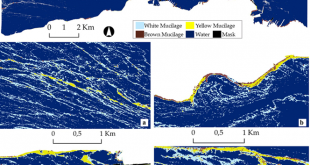International Journal of Environment and Geoinformatics (IJEGEO), 6(3): 244-259
Calculation of Flood Risk Index for Yesilirmak Basin-Turkey
Menteş E., Kaya, S., Tanik, A., Gazioglu, C.
Abstract: Flood risk, in the sense of damage that a ‘flood event’ can cause, was globally indexed and quantified to show the relationship between various natural and social factors. The Pressure and Release (PAR) model consisting of five key indexes, namely hazard, exposure, vulnerability, capacity soft countermeasures, and capacity hard countermeasures along with the entropy method was used to measure the uncertainty in information gathered. In this study, flood risk index was calculated for Yeşilırmak Basin of Turkey based on PAR. The basin is one of the coastal watersheds of Turkey experiencing frequent flood events. Damage data covering years from 2000 to 2015 have been obtained from the Ministry of Agriculture and Forestry for Turkey. Candidate data for hazard, vulnerability, countermeasures and exposure were collected in accordance with temporal and spatial scales, and the collected data were compiled on a watershed basis. When grouping the sub-indicators, AWDO (Asian Water Development Outlook) was used and selected from a group of parameters covering a wide range of characteristics such as economy, health, vegetation, population, river according to their global presence, and data consistency. As long-term data accessibility was highly limited under basin conditions, data was obtained from relatively more reliable global sources such as United Nations’ databases on which data has been collected annually. The correlation among the collected parameter values was calculated based on the amount of damage that had occurred, and data with high correlation was included in the index account. Parameters that were not screened were rather weighted by using the entropy method and their effect on flood damage were determined. The calculated flood risk index based on PAR model was named as Yeşilırmak Basin Flood Risk Index (Y-FRI). The resulting Y-FRI radar charts indicated that the most important variation occurred for the soft countermeasure index. In addition, the five main indices and the flood risk index was positively correlated with hazard, exposure and vulnerability indices, while negatively correlated with the countermeasures. This study showed that not only the hazard parameters directly contribute to flood formation, but also the vulnerability, exposure and countermeasure parameters that reflected the conditions of the region where the flood occurred have quantitatively influenced the flood damage.

Available Online: https://app.trdizin.gov.tr/publication/paper/detail/TXpNM01UZzNOdz09
 UHUZAM İTÜ – Uydu Haberleşme ve Uzaktan Algılama UYG-AR Merkezi
UHUZAM İTÜ – Uydu Haberleşme ve Uzaktan Algılama UYG-AR Merkezi 